Condensation on Windows – Is it Bad?
It’s that time of year when condensation on windows becomes a pain, we wake up in the morning, can’t see out, curtains are wet, there’s water on the window bottoms, and even worse it can affect the walls below windows causing mold and mildew in drywall and furniture.
Condensation is bad news in multiple ways – it indicates where a home has weak spots or thermal bridges in its insulated envelope, it points to problems in high humidity levels in the home – possibly coming from hidden problems in basements, crawlspaces, walls or ventilation systems – and some things are certain when a home has condensation running down the windows:
- Condensation won't disappear on its own
- Condensation is potentially detrimental to health as it allows for mold and mildew growth
- Condensation can cause damage to homes and lead to costly renovations and repairs
So, the question is – what should we do about condensation? How do we fix and prevent condensation in our homes?
Condensation in homes – the basics
So what is condensation? Condensation in its purest form is caused when humidity in the air comes in contact with a cold surface and it condenses from a gas to a liquid again.
Where we notice it most in our homes is on windows, or on the sides of a nice chilled glass of chardonnay or a cold beer – with the exception that one denotes a pain in the butt, the other pleasure!

The reason we notice condensation most on glass is that it’s an impervious material – the water has nowhere to go so it sits there, waiting for us to wipe it off and running downwards until it does find a surface to soak into – which is unfortunately where the problems start to occur. Unless of course it's soaking into our t-shirt on a hot summer's day - but we're talking here about the miserable & cold kind that sits on the bottom of windows in winter and can even freeze up if we're really unlucky and the wood stove went out overnight! (Which is what inspired Harold Orr to design the Saskatchewan Conservation House, which in 1977 acted as a laboratory for the development of many previously unheard of building techniques that are now standard on the best performing houses in the world.)
The other factor to consider, other than warming cold surfaces to mitigate condensation which is the traditional route to reducing condensation on windows, is that it can also happen when there's simply too much humidity in a home. As noticed most often in the colder months of the year when it meets the cold glass of bedroom windows, as cooling air becomes unable to hold as much moisture, it condenses.
So, at it's simplest, condensation on windows is the result of relatively warmer and humid air meeting a cold surface - but this is on a sliding scale.
To look at this in a scientific way, let's use some information from the Passive House Institute. Their recommendation is for surfaces in the home to be a minimum of 55 degrees Fahrenheit (12.6 degrees Centigrade) including the surface temperatures on windows if relative humidity is 50% to prevent a localized window Relative Humidity of greater than 80% at the glass - which is what causes the condensation on windows or window frames if they are single or double glazed - especially if they have aluminum glazing bars.
What’s the problem with condensation?
Traditionally, most building experts will mention mold and mildew as the main problems caused by condensation in homes – but first off, here’s a point to think about in connection with condensation on windows that we haven’t seen specifically mentioned anywhere.
As a key element of Passive House, Net Zero Energy and high-performance homes is consistently making the most of Passive Solar Gain, having a home where each day starts with fogged over windows is absolutely a huge detriment. A hidden effect of condensation on house windows is that once the sun does come up, which could and should be heating our high performance home’s interior in the colder months, instead the sun’s heat is being used up to evaporate the window condensation while also putting all that moisture back into the home interior and ultimately raising the humidity level. (Most folks don’t realize that evaporation is the biggest cause of heat loss in a swimming pool also).
So that’s one issue that makes condensation a problem, using energy unnecessarily – but then of course damp is caused by condensation too and our homes are generally not built to resist moisture. Even minor water damage can leave severe stains and damage on drywall while other times you will need to completely remove the damaged drywall and replace it – especially if it becomes badly affected by mold and mildew – which usually makes an appearance as a cloud of little black dots around windows or in the corners of rooms.
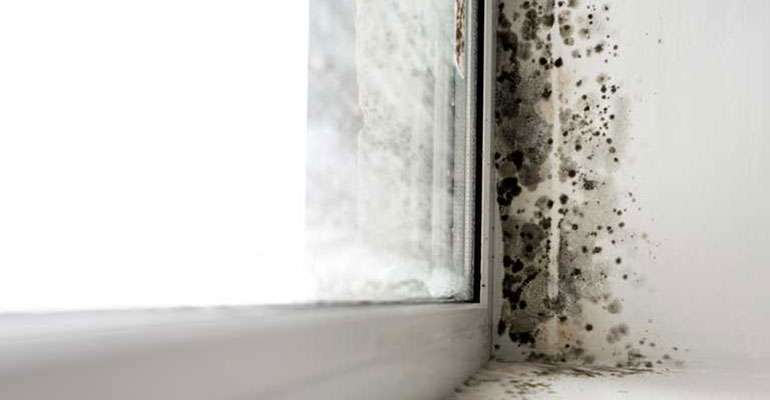
As condensation occurs when moist air comes into contact with a colder surface like a wall, window, mirror etc. this is usually where we find mold and mildew growth first – but we’ve also seen it behind wardrobes and furniture where air doesn’t circulate as freely so the drywall can’t dry out.
Mold can grow on virtually any organic material as long as moisture and oxygen are present. There are molds that grow on:
- Wood
- Paper
- Carpet
- Food
- Insulation
Because mold eats or digests what it is growing on, it can damage a building and its furnishings. If left unchecked, mold eventually can cause structural damage to building materials, rotting wood, disintegrating drywall, costing the homeowner money for remedial work and potentially reducing a home’s value
If the humidity level in a home is above 60%, certain molds start to grow and flourish in under 12 hours – so if condensation is present, there’s almost certainly mold and that may become a big issue..
Condensation, humidity, mold and health
Exposure to damp and moldy environments may cause a variety of health effects, (or none at all). Put simply, some people are sensitive to molds. For these people, molds can cause nasal stuffiness, throat irritation, coughing or wheezing, eye irritation, or, in some cases, skin irritation. People with mold allergies may have more severe reactions and immune-compromised people and people with chronic lung illnesses, such as obstructive lung disease, may get serious infections in their lungs when they are exposed to mold. These people should stay away from areas that are likely to have mold – such as a home with high humidity.
In 2004 the Institute of Medicine (IOM) found there was sufficient evidence to link indoor exposure to mold with upper respiratory tract symptoms, cough, and wheeze in otherwise healthy people; with asthma symptoms in people with asthma; and with hypersensitivity pneumonitis in individuals susceptible to that immune-mediated condition. The IOM also found limited or suggestive evidence linking indoor mold exposure and respiratory illness in otherwise healthy children.
In addition, also in 2004, the IOM found sufficient evidence to link exposure to damp indoor environments in general to upper respiratory tract symptoms, cough, and wheeze in otherwise healthy people and with asthma symptoms in people with asthma. The IOM also found limited or suggestive evidence linking exposure to damp indoor environments in general to shortness of breath, to respiratory illness in otherwise healthy children and to potential development of asthma in susceptible individuals. In 2009, the World Health Organization issued additional guidance, the WHO Guidelines for Indoor Air Quality: Dampness and Mold .
Other recent studies have suggested a potential link of early mold exposure to development of asthma in some children, particularly among children who may be genetically susceptible to asthma development, and that selected interventions that improve housing conditions can reduce morbidity from asthma and respiratory allergies.
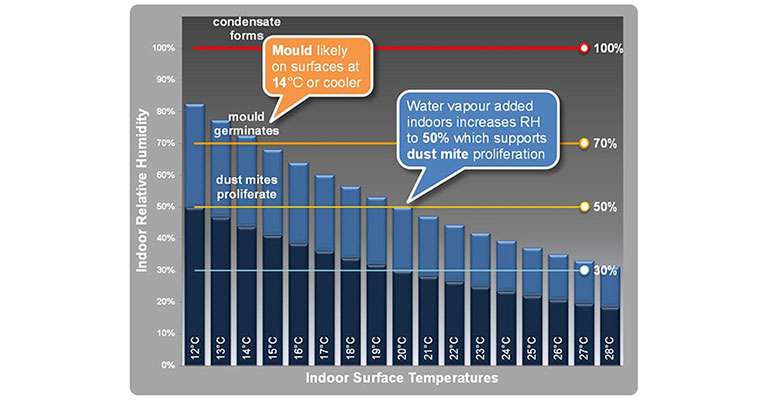
Before we all panic because we noticed some condensation in our homes, remember that eliminating all mold and mold spores indoors is virtually impossible, but controlling indoor moisture and humidity levels will control the growth of indoor mold – so this is the key.
Condensation is a symptom of other issues
Consider condensation as a symptom and not a cause of home humidity being too high, so, if there’s condensation happening on windows, the first step we’d suggest is to get hold of a hygrometer or humidity meter or monitor to test the level of relative humidity in the home – because ironically the higher performance the home gets, with air barriers and better windows and doors, the more chance there’s going to be a problem with humidity unless it’s been designed with automatic mechanical ventilation systems like HRV’s & ERV’s from the off (Which many haven’t).
The original hygrometer was called a sling psychrometer – and consists of two thermometers mounted together with a handle attached on a chain. One thermometer is ordinary, the other has a cloth wick over its bulb and is called a wet-bulb thermometer.
But this is the electronic age – so if money is no object, there are smart hygrometers available that monitor year-round and have maximum and minimum alarms. One of the better ones we found is the Temp Stick at around $150 which comes with a 5-year warranty and is Made in USA! If on more of a budget, we’ve had good experience with the ThermoPro TP50 digital hygrometer – cheap as borscht, pretty accurate, and does the job for around $10.
Monitor humidity levels in the home over a week and at different times of the day and we’re willing to bet that they get above 60% relative humidity. If so, then there are several things to do that will help:
- Limit the amount of humidity being produced in the home or entering it.
- Ventilate the home to remove excess moisture.
- Dehumidify the air in the home to bring the relative humidity below the 60%.
- Heat and insulate homes evenly to try to prevent cold spots that will provoke condensation.
The question remains, how do we do all those for the best, to help reduce the humidity level and reduce the chance of condensation?
How to reduce condensation in homes?
How should we limit the amount of humidity inside homes & reduce condensation? Once we’ve identified that a home is over the recommended humidity level of 60%, we should firstly try to identify where this excess moisture is coming from. All living organisms give off humidity simply by existing, humans, animals, even plants – so is the home large or small in relation to the number of occupants? This might be the ideal time to turf those 20 something kids out of the house, citing that they are risking devaluing their inheritance and that it really is time they got a place they can call their own (and leave us in peace!) – Surprising how rarely Mom’s buy into this as a plan!
Interestingly, up to half of the high humidity solution is changing personal habits in the home:
- Showering - The bathroom is the most humid place in the home, and something as simple as taking a shower releases huge amounts of humidity into the air – the hotter it is and the longer it is, the more water vapor is released. So, to reduce this avoidable humidity source and save energy and water, always be sure to shower with a friend, failing that the dog, or otherwise - simply try to keep to a reasonable temperature and timespan – while running the bathroom fan during the shower and for 15-20 minutes after to get that humid air outside. Because of the number of incorrectly installed bathroom fans we’ve seen installed – it’s also probably worth double checking in the loft space that bathroom fans are correctly vented to outside and that joints are duct taped up properly too – because venting into the roof void simply creates condensation, mold and wood rot problems up there instead of in the home itself. Make sure too to use a decent size bathmat to avoid saturating bathroom floors when getting a bath or shower. The bathmat should help soak up some of the moisture, helping to reduce the condensation in the room, especially if it is put in the dryer along with the wettest towels.
- Cooking and using a kettle or coffee maker – Kitchens are the second biggest source of home humidity, cooking, kettles and appliances all release steam, so be sure to use pan-lids when cooking to reduce moisture being created from the water boiling, to speed up the time it takes to heat pans, and have a cooker hood that’s set to extract and use it all the while cooking and for a little time after. Again, much as with bathroom fans, check ductwork for taped and sealed joins – and when buying a new cooker hood, buy a quiet one by preference and then it’s more likely to get used.
- Close kitchen & bathroom doors – As bathrooms and kitchens are the worst culprits for condensation. when cooking food, boiling the kettle or taking a shower, ensure that the kitchen or bathroom door is kept closed to prevent the moisture in the air from going into colder rooms which will cause condensation to form if it touches a cold surface.
- Laundry – Never, ever, EVER dry laundry inside on a rack or line when it’s cold outside – every load releases almost 5 pints of water into the air. If it won’t dry outside, then don’t attempt to dry it inside unless in an exterior-vented dryer. The second advantage is for interior air quality – as the artificial scents in laundry detergents and softeners will mostly dissipate outside so we aren’t breathing them in. Once again, double check ducting for leaks.
- Unvented gas heaters, stovetops & ovens – When natural gas or propane and butane burns it releases water vapor and potentially carbon monoxide. None of these are good in homes or our lungs or bloodstreams, so either choose a different heat source where possible, like a nice wood burning stove, or if not then ventilate to get that all outside.
- Humid basements or crawlspaces – When a home is built on a crawlspace or basement this can often be the cause of humidity in the home – even when the home is newer many areas building Code’s lock humidity in finished basement walls for years, causing damp and mold issues. Many basements were built with inadequate insulation, see here to find out how to improve it if so, or see here for more information on insulating crawlspaces. To learn how to prevent mold in basements, see here – or how to prevent humidity and radon gas in crawlspaces see here. To learn how to build a home on a slab-on-grade foundation which is our preferred option, see here.
- Those pre-Christmas home renovations – People often want to freshen up their homes in preparation for the holiday season, but if painting large areas of wall then all that has to dry, and this moisture goes straight into the interior air unless the space is well ventilated. Be sure to choose zero VOC paints, or it's even easy to make VOC free paint, find out how here, and choose nice weather for internal painting so the windows can be flung wide open to get those chemicals and that water vapor ventilated outside.
- Modern air conditioning systems - Believe it or not, AC systems can raise the levels of the humidity in homes. Specifically, I mean the newer models that are supposedly going to save up to 50% in electric bills because they work faster and use less energy. The part about spending less energy because they are faster and cool down the home faster is true. However, the older AC models, which had to run longer to achieve the desired temperature, were often better at removing humidity from the air just because they were running longer. On the other hand, the new models, because they achieve the desired temperature much faster, don't remove the humidity from the air. There might even be more relative humidity than before turning it on as the cooler air has less ability to retain moisture vapor. The solution is to make sure that any “winter” mode is actually acting as a dehumidifier and that the relative humidity measures less if the unit is running in winter mode – we’ve had a few surprises!
- Careful selection of houseplants - If living in an area where the natural humidity is already high, having plants such as Ginger, Asplundia, Monstera, Ficus Benjamin, Areca palm, and Bamboo palm will only make humidity problems worse – choosing plants like Peace Lily, Boston Fern, Orchids, Spider Plant, Tillandsia, Cactus and English Ivy should help lower humidity and improve internal air quality, but water sparingly and often for best effect.
- Check for water leaks! – Any pipes carrying water in the house, both delivery of hot and cold or heating and evacuation, should be checked for leaks and any leaks fixed promptly. All excess humidity in a home’s structure is best removed at the source – so also check gutters, downspouts, roof coverings and rainscreening for signs of leaks.
- Choose & fit high efficiency HRV or ERV units – With modern homes being more airtight, it’s also a great idea to fit a mechanical ventilation system with heat or energy recovery depending on the climate zone the property is in. To learn more about mechanical ventilation systems, see here – or to discover how to choose between an HRV or ERV unit, see here. If in a cold climate, it’s also a great idea to fit a low level evacuation pipe on the HRV or ERV unit rather than a roof vent that can freeze up and be hard to check and keep clear.
- Fit a high efficiency and appropriately sized dehumidifier – Once everything has been checked and sources of humidity in the home reduced as much as possible – if the relative humidity levels stay too high then there is always the possibility of running a dehumidifier or multiple dehumidifiers for each level of the home to bring the humidity levels down into the ideal range to avoid condensation, mold and mildew.
Other ideas to minimize condensation in homes
A key condensation point is windows, and the best way to keep on top of condensation around windows is to be on the lookout for any damage to the sealant around the window frame as this can allow water in – to learn how to fit and seal windows properly, see here.
Also, if there is some condensation, try to wipe down windows and window sills promptly with a sponge that gets wrung out down the drain and rinsed in bleach, to ensure no excess moisture enters the property's air and open windows as often as possible on warmer days to allow air to circulate.
As rooms like bathrooms are optimum environments for high humidity causing condensation, getting into the habit of using a silicone squeegee on shower enclosures and tile after finishing a shower encourages water to drain away rather than it have to evaporate.
Condensation on unused bedroom windows may be noticed last, especially as it is a room not used very often. Signs to look out for with condensation around bedroom windows are; water on the windowsill, damage to window frames and it is also important that you don't ignore black mold on soft furnishings like curtains or cushions – we would always suggest keeping the heat turned up in the spare rooms of a house – it’s generally a false economy turning off the heat as they become a magnet for damp, mold and insect attack.
I’ve just realized, the condensation is between the glazing panels!
Condensation within double glazing typically suggests that there is a problem with the sealed unit in the windows. This means that a point in the edge seal of the window has failed and is allowing moisture to enter because the sealant between the glass and frame will have to be renewed. For help on deciding when to change windows, see here - or for help in deciding which type of windows to choose, see here.
On older or poorer quality units, the sealant used to create the seal (around the windows) may be of a low grade or become loose over time. If the seal and bead that’s supposed to hold the glass in the frame deteriorates, moisture and water can get into the frame. Allowing large amounts of water to settle in a window frame like this for a long period of time will eventually affect the ‘air gap’ seal surrounding the two panes of glass and if it’s a wooden frame it will cause it to rot.
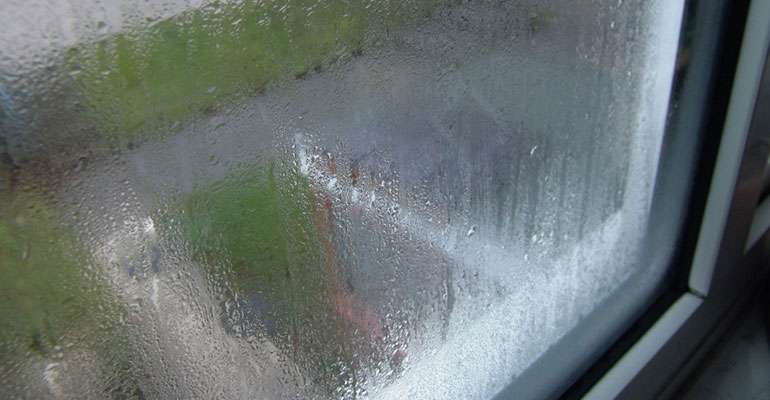
Sometimes, uPVC frames will crack and allow water to gather. Another reason why you may see condensation in double glazing is because of a fault with the ‘spacer’ bar. Most double-glazed windows now feature a ‘spacer’ in between the two panes of glass and this is full of desiccant, a highly-absorptive material which sucks up any moisture in the ‘air gap’ void. In fact, you're as likely to get condensation on new windows as old windows, and new windows may even increase condensation, since they should reduce draughts in the home. That said, condensation on the inside of windows is something we should try to reduce, since it can damage window frames.
If there is even the slightest imperfection in the seal, this desiccant can quickly become saturated by any moist air or water which enters. When it cannot retain any more, the moisture then begins to appear as condensation between the panes of a multi pane window, most often noticed on a sunny day when it looks foggy.
If you have condensation in double-glazing, then it is a sign that the sealant has failed, and this usually means that it will have to be replaced or resealed. If the windows are old, then replacing the whole unit can be recommended so that the same problem does not occur again.
What other types of condensation can happen in homes?
Interstitial condensation creates structural damping and subsequent damage that occurs when moist air penetrates inside the hidden space within an enclosed wall, roof or floor cavity of a home. When that moisture laden air reaches a layer inside the interstitial structure (or simply put, wall or roof cavity), that is at dew point temperature, it will condense into liquid water which then soaks into timber, insulation and drywall. This is often a problem with flat and cathedral roofs but it also happens frequently in framed walls but doesn't get spotted until it's too late because of the ubiquitous poly vapor barrier between the drywall and the studs.
The moisture laden air can penetrate into hidden interstitial wall cavity from the exterior in warm outdoor temperatures and inside the building during cold outdoor temperatures. The resulting structural damage, along with mold and bacteria growth may occur without any visible surface indications until significant damage or extensive mold and bacteria growth has occurred. To find out more about the difference between air and vapor barriers, see here.
This is why it’s so very important to carefully seal air-barriers in homes, paying special attention to joins and breaks in the membranes – especially where secondary trades have passed after air-barriers were fitted - and by using specialist sealing tape that stays stuck down properly.
Last but not least – if you live in a cold climate area that is susceptible to condensation in homes and are choosing toilets for a home construction or renovation, by preference specify low flow toilets designed with an insulated water tank to avoid water damage or mold below the cistern caused by condensation and it sweating down the wall.
Now you've learned all about condensation on windows in homes, why it happens & how to stop that wet winter-time condensation nuisance, read more below:
And see more Green Building Guides for Sustainable Buildings on North America's favorite sustainable building advice website - EcoHome.net |
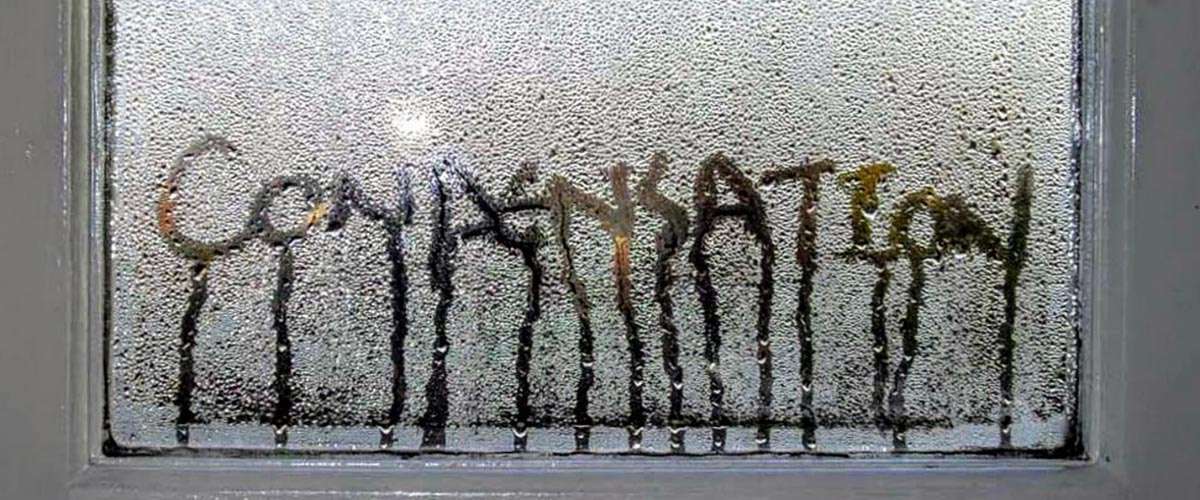


















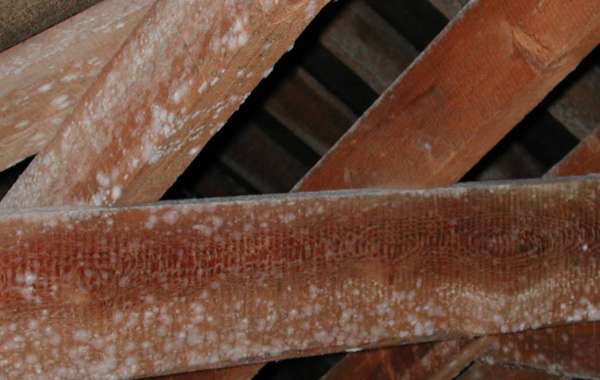
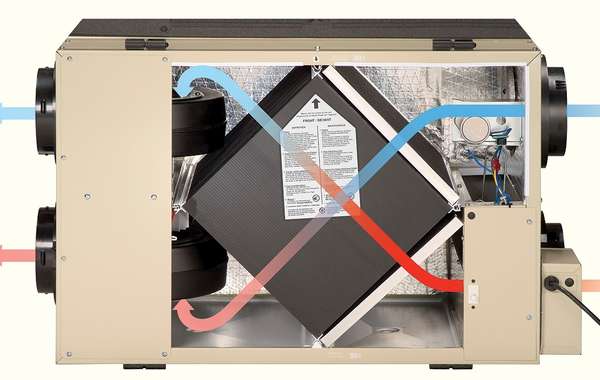
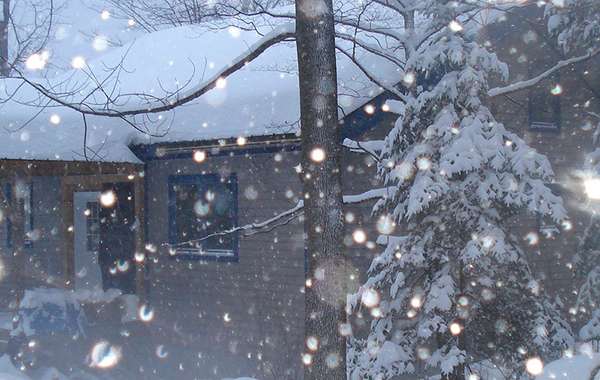
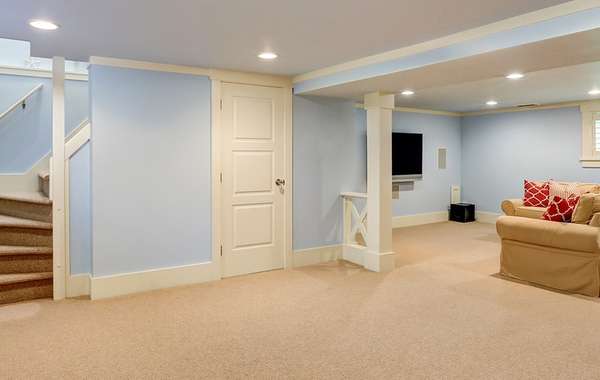
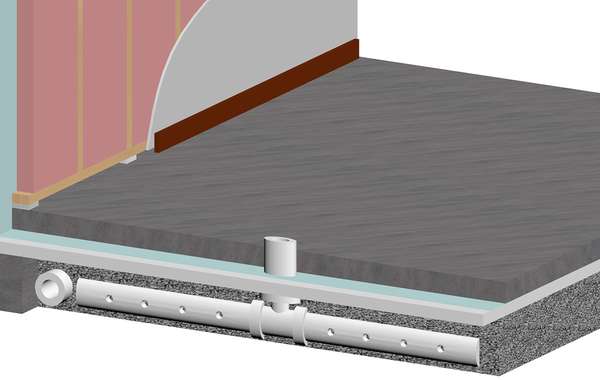
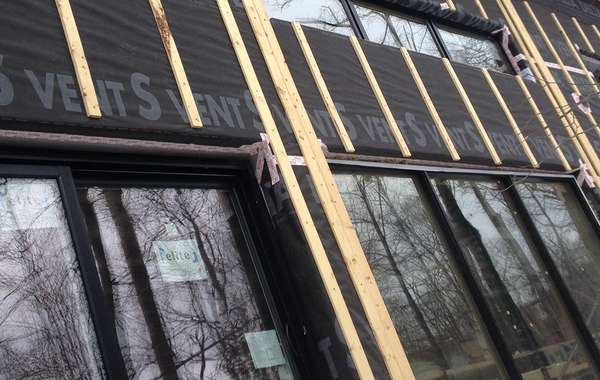
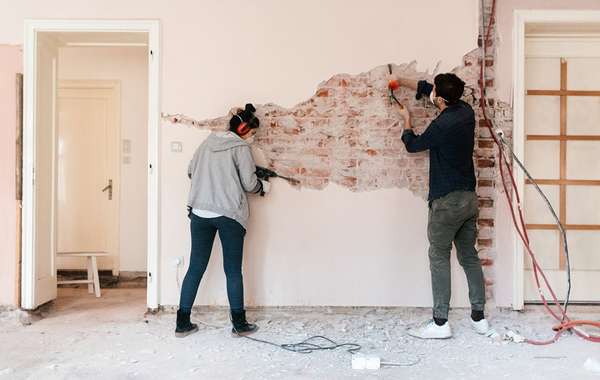
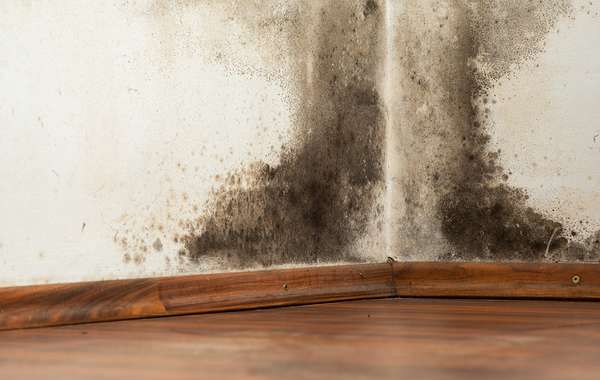
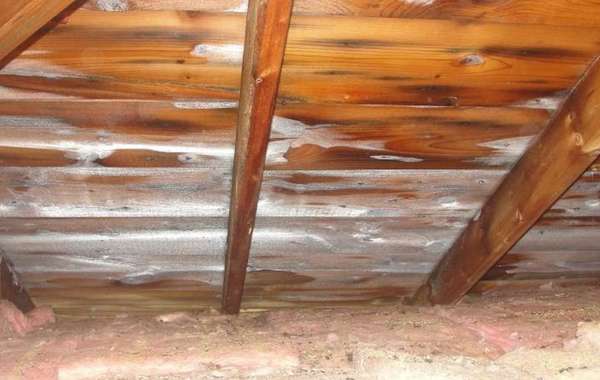
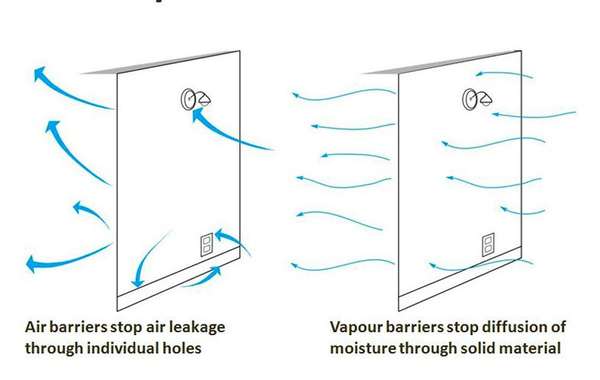
So, we who live where winter temps get to well below zero must either live with humidity so low it causes nosebleeds and static or have frost on our windows. We have new Marvin double hung windows with low e double pane glass, plus storm windows. With temps here -27F we had ice on interior of windows with indoor RH of 37.
Can I ask what regular ventilation is running in the home?
We have a heat recovery ventilator but don't run it regularly. We run the bathroom fan when showering. We usually run a humidifier in winter.
I had condensation issues on my single-pane windows last winter. In addition to trying to lower humidity levels in my house, I was planing on installing interior storm windows. Will interior storm windows help with the condensation? Or will I still get condensation between the storm window and regular window?
Additional question: since I have single pane windows, is it possible to install interior *and* exterior storm windows? Will that cause any issues or will the benefits stack to increase the energy efficiency of my house? I'm just wondering whether there are any downsides other than diminishing returns.
It is possible to install interior storm windows, yes, but there is a cost involved and depending on the condition of the main frames some condensation may get stuck between the panes which is why they often unclip or swing out so interior cleaning is possible. Depending where in the world you are and the temperature and humidity differential between inside and outside, one simple and cost effective temporary improvement for the winter months can be to install a clear window film inside that tensions with a hairdryer. Also, work on that all important ventilation, and the reduction of the interior humidity by all the suggestions in the article.
How does the window insulation affect condensation on windows?
Hi August, can you elaborate a bit on your question? Not sure if you mean insulation of the frame, around the frame, or even the insulating pockets of gas or air between panes.
Condensation forms on cold surfaces, so the warmer a surface is then the less risk there is of condensation forming. Triple pane windows are war mer than doubles, so less moisture from the air will condense on it, same goes for frames and even the rough openings if they aren't properly insulated to protect against thermal bridging. I'm not sure if that answers your questions but feel free to go into more detail.
Hi,
My bedroom window is about 6.5ft by 6ft. Every winter when I open the curtain the window and wall are covered with water. The metal frame is also. Sometimes I use a towel, but most of the time I just leave it.
I use a large dehumidifer in my bedroom about 16 hours a day, I bring the humidity down to 40-45%, but in the morning it is up beteween 60-80%, very terrible! But usually I don't worry about window because I use the dehumidifer during the day, but the problem is it is causing mold/mildew issues, I have just cleaned it up the best I can to prepare to actually do something about it. It is horrible. The floor tile was yellow, there is still black mildow in the corners, but it is much better than it was, I think I will never get it all cleaned up, but at least if I can stop any more moisture issues and more mold and mildew growing that will be a great help.
My curtain has turned a bit orange in places now and another pull down curtain inside is black, I don't know how to clean it... I have wiped down the big areas of the curtain that were problematic but I need to wash the whole thing, I know.
So a thought I had is run a small, quiet dehumidifer behind the curtain during the nights while we sleep in order to suck up only what is behind the curtain, but the smaller ones may not be able to do enough. The ones I have found can only take about 10oz of water ever 24 hours, that is not nearly enough for the problem. And I do not want to put the big machine behind the curtain, it is loud and overkill and it is not good to sleep with a dehumidifer on as it is.
I have no plants in my room. And like I said, we keep it dry doing the day, but that window faces NW, no sun in the morning, and the temp difference is part of hte problem I think. I need to get the condensation under the control. I have even considered to run a small clip fan behind the curtain to just get air flow, but doubt it would work.
I am going to buy some damp boxes to suck out the moisture from the air behind the curtain as well, but those are very slow, usually they are for closets, so doubt they will be effective...
Any other suggestions? Thank you.
Do you ever put put plastic over the windows? I think that would help a lot. There is seems to be a lot of moisture in the room, I don't know why that is but that is also worth figuring out. But as for avoiding condensation, I think the plastic is the first step as it will be a much warmer surface than the glass, so that will cut down on moisture accumulation a lot. My other suggestion would be to run a fan. You say you don't think it would work, but I think you may be pleasantly surprised. It would be difficult for condentation to form on a surface that has a breeze blowing across it. It should also be quieter than a dehumidifier. Lastly, if all else fails, if you lay a towel or something absorbent at the base of the window that you can remove in the morning and dry out, it could also prevent water getting to places where it can do harm. Hopefully something in there helps!
It seems like you have a pocket of cold air trapped between the curtains and the window. To prevent condensation, every surface in the pocket needs to be above the dew point of your indoor air. If your indoor air is 70F and 45%RH, the dew point is 48F. When I close the curtains in my bedroom on a cold night (20F or so), the air temperature in the pocket drops to about 45F. The window pane temperature is even lower.
You need to raise the temperature of the air in that pocket above the indoor air dew point. The fan suggestion might work, by pushing warm room air into the pocket. Leaving the curtains open would do the same thing. In theory, completely sealing the pocket off from indoor humid air would work, but I've never tried that.
I too have found that a small, quiet fan consuming around 5 watts/hr placed on the window will does indeed eliminate our condensation issues. Our windows are triple-glazed with insulated fiberglass frames and on very cold (-20C and colder) nights a band of condensation forms across the bottom of the glass and heads part way up the sides. With the fan operating though, condensation just doesn't form. Those fans are roughly $15 in Canada (at Canadian Tire stores). Oh, and our RH during the winter is around 45 - 50%.